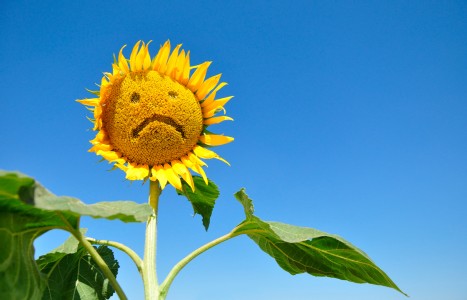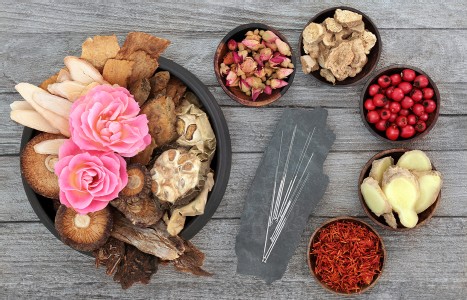Did any of you ever get the feeling in school that it simply was not OK to speak about wanting to be successful? To get into the nitty gritty details of how to make money in practice? Maybe you were even someone like me who was directly told by someone in a position of power that I needed to take what I could get because in private practice, I wouldn’t make money.
The Development and Growth of Acupuncture in Australia
The first recorded material on traditional Chinese medicine (TCM) is traced back to the third century B.C. It has existed in Australia since the intake of Chinese immigrants into the Australian gold fields in the 19th century. By 1911, Chinese herbal medicines were available in Australia with English labels and directions.
Over the past decade, TCM (particularly acupuncture) has grown enormously. In Australia, a large intake of Asian immigrants have brought further knowledge of TCM to this country. Thousands of new TCM/acupuncture clinics have sprung up. Many of these practitioners are experienced, well-trained, and have a sound knowledge of TCM.
However, many not so well-trained practitioners have also opened up "clinics," which clearly represent a health risk to the Australian public. The untrained are not familiar with Western sterility techniques and diagnoses and the interactions of drugs with herbal remedies.
Some amazing "cures" have been accomplished, particularly those concerning arthritides, bronchial asthma, and other disease states. However, Western-trained medical doctors, when consulting, have noticed changes in the physical appearance of these patients, as well as the emergence of strange symptoms resembling Cushing's syndrome. These symptoms were brought about by the illegal use of, or adding of, cortisone to Chinese herbal medicines; hence the seemingly "miraculous" results. This is certainly dangerous as well as illegal. These activities were originally noticed in two states, although it is likely that similar acts went undetected in other states.
Victoria was the first state to take action. In December 1985, the Victorian Department of Human Services commissioned a report on the practices of traditional Chinese medicine. The department undertook this review on behalf of all states and territories and was the main financial contributor. The states of New South Wales and Queensland also contributed to a lesser degree in funding the study.
Mr. Alan Bensoussan of the University of Western Sydney Macarthur, along with Dr. Stephen Myers of Southern Cross University, undertook the research. A committee was set up of representatives from numerous TCM/acupuncture associations and colleges of all states, originally consisting of about 32 members. Their intent was to investigate and make recommendations regarding regulation, education, patient risks and the monitoring of herbal medicines. They would also assess Chinese medicinal substances too toxic for use in Australia, and conduct research into the interactions of Chinese herbal medicines and Western pharmaceutical drugs. This would assure the public that practitioners would have the proper education, while ensuring that health care choices would remain as wide as possible and delivery as safe as possible.
Recommendations were also made for professional associations to standardize items such as course requirements, continuing education and codes of conduct.
The committee's findings were presented to the Australian Health Ministers Advisory Council (AHMAC) for consideration. The aim was to get a national picture of the benefits/risks and make recommendations to help decide government policy on regulation.
The purpose of registration was to protect the public rather than a professional group. Practitioners are required to be registered in professions likely to cause significant harm or endanger public health. No definition of a TCM practitioner would be included in legislation, because it would be difficult to achieve a consensus concerning definitions and find definitions that would not encroach on other related professions such as chiropractors, osteopaths, medical doctors and so forth. The use of "acupuncturist" or "TCM practitioner" would be protected by restricting the use of titles to those with accredited qualifications or registered as practitioners under the act.
The questions of self-regulation and a national regulatory scheme were investigated initially, but the view was that the role of TCM should be regulated under the same conditions that apply to medicine, chiropractic, physiotherapy, nursing and other less risky/intrusive health occupations. National versus state registration was rejected due to constitutional barriers.
Preparing submissions to AHMAC continued for some five years. One can only begin to imagine the in-house political ploys made by some to gain control. There was misrepresentation on the Internet by those who claimed to be the "national authority" and had "national academic standards" for TCM. (No such standards have been approved by the government.)
The dirty tricks of politics and manipulation have been (and are) all too obvious. Scare tactics and unethical practices were used by many organizations, some involved and some not, with the committee for submission to AHMAC. These tactics included making phone calls to unsuspecting practitioners stating that TCM would be regulated on a national basis, but that by joining their organization (for a fee, of course), they would be safe.
There was also soliciting by acupuncture/TCM associations for members to increase numbers for a more powerful political front. Suggestions were made by powerful TCM/acupuncture associations not to accept acupuncturists from already-registered health practitioners because their postgraduate courses were not recognized by them.
Imagine not accepting advice from well-trained, registered medical practitioners, chiropractors and physiotherapists, and being scorned by those who are not so well-trained in Western clinical sciences! This in spite of the fact that the committee was advised to communicate and receive advice from registered practitioners using TCM and acupuncture.
This was a very daring act, which denigrated and rejected the recommendation for advice from long-established and respected health professions. An investigation would have proved that many of the committee's own members would be unable to meet their own standards. Many were unfamiliar with Western diagnostic procedures.
Submissions were presented, and a document titled Towards a Safer Choice was published by the Victorian state government. Shortly afterward, an advisory committee and subcommittees were set up by the state to advise the Victorian minister for health on methods, standards, training, grandfathering, protection of titles, labeling, dispensing of Chinese herbal medicines, giving advice on strategies to overcome language barriers, and providing a suitable response to the report.
The Practice of TCM in Australia and Recommendations Arising from the Consultation Process
I foresee the grandfather clause automatically covering full-time TCM practitioners who have practiced a minimum of five years and are suitably qualified. Many so-called "practitioners" making false claims of unsubstantiated "cures" practicing part-time with suspicious "qualifications" will be forced out. While this would be difficult to police, there would be protection of title for the registered practitioners and protection for the public in general.
This is a Herculean task, with many obstacles to be overcome. For example, our Chinese colleagues suggested that we learn Mandarin Chinese and stick to the "traditional" way: to learn the acupuncture points by Chinese nomenclature and abandon the easier Western method!
Other suggestions have been made regarding the use of animal substances from endangered species. There has been a strong rejection by Westerners. We were then asked, "Can we use unendangered species?" We responded by asking, "Where is the scientific proof of animal substances having therapeutic value? How long before the unendangered become endangered?"
Hundreds of such obstacles have had to be overcome. Progress has been slow but nevertheless forward. Many TCM "colleges" will no doubt go under, and it is understandable that the faculties and principals of these institutions are fearful. It is clear that a common standard will be found, both for undergraduate and postgraduate courses, and that only the appropriate teaching institutions/universities will survive and teach, at least in the state of Victoria.
The Victorian state government is taking a sensible and logical course, guided by intelligent people whom I am sure will filter out the undesirable material. A second reading of the bill has already gone through state parliament. Very soon, registration of TCM/acupuncture will become a reality. The registration board will probably consist of between 7-9 members, consisting of TCM/acupuncture practitioners, medical practitioners, a lawyer, and laypeople. I imagine there will be an apprenticeship period, as there was with the chiropractic board, before it becomes a totally independent body.
The major object of concern for the majority of associations preparing these submissions for AHMAC was undergraduate courses, ignoring the requests for postgraduate education standards by already-registered practitioners. The majority of this committee was deeply committed to the traditional folklore of TCM. Postgraduate delegates, meanwhile, were in the minority.
The government of Victoria, guided by the newer committees, accepts that registered practitioners be exempted from requirements to register with a TCM board under certain guidelines, the recommendations being:
- That they meet the requirements for education and clinical practice set by their own registration board;
- That these standards have been endorsed by the TCM registration board in consultation with the practitioners' registration board;
- That when a general health practitioner health registration board investigates a complaint of unprofessional conduct involving the practice of TCM, it has access to suitable expertise in TCM on which to base its findings.
Ad hoc committees have already been set up for registered health practitioners who will look after their own. There is still a tough road to travel, but we are headed in the right direction. Victoria will set the standard for the rest of Australia. The registration of TCM/acupuncture will occur!
In 1995, I envisioned that acupuncture and TCM registration would follow the models laid down by the bodies of already registered health practitioners, as happened to chiropractors and osteopaths in the 1970s. At first, this suggestion was treated with contempt, but it is now proving to be correct. History has shown that following registration in each state (with Victoria again being first), there would be similarities in the structure of boards and legislation based on the model set by Victoria.
After each state had created its own similar legislation, a national board of examiners was set up, and mutually agreeable academic standards were established. There will be recognition of qualifications between each state.
If anyone should have any reasonable requests or questions regarding the development and growth of acupuncture in Australia, please contact me at ryodacu@alphalink.com.au.


